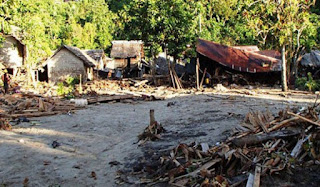KRATON, WHERE PEACE AND SERENITY THRIVES
BY GEORGINA KEKEA
In Yogyakarta, Indonesia
BELOW the
foot of Merapi, one of the most active volcanoes on earth lays the city of
Yogyakarta in Indonesia. Officially one of Indonesia’s 32 provinces, Yogyakarta
is one of the foremost cultural centers of Java.
Established way back in 1755,
classical and contemporary Javanese dances, wayang kulit (leather puppet),
theatre and other expressions of traditional art will keep any visitor
spellbound. Local craftsmen excel in arts such as batiks, silver and leather
works.
Outside of
the Sultan’s Palace, craftsmen and women alike all stand in anticipation for
visitors to buy their products.
‘You like,
you like’, they will say and are very persistent in their sales. The Sultan’s Palace known as the ‘Kraton’ in
their local dialect is the center of Yogyakarta’s traditional life.
Despite the
advance of modernity, it still emanates the spirit of refinement which has been
the hallmark of Yogya’s art for centuries. This vast complex of decaying
buildings was built in the 18th century and a walled city within the
city with luxurious pavilion and in which the current Sultan still resides.
“According
to traditions, only a son must inherit the position of Sultan. Not girls’, a
tour guide of the Sultan’s Palace explained.
“The current
Sultan now has no son. Only five girls so we do not know what will happen now.
Even a grandson cannot inherit. The next inline has to be borne from the man’s
side”, she said.
Tour guides
in Kraton are mainly volunteers who wish to serve the Sultan. Most are old aged
people who have long retired and decided to serve their Sultan while they wait
for their afterlife. Their beliefs are
quite strong and most carry out their duties with pride and humility.
ENDS///






Comments
Post a Comment